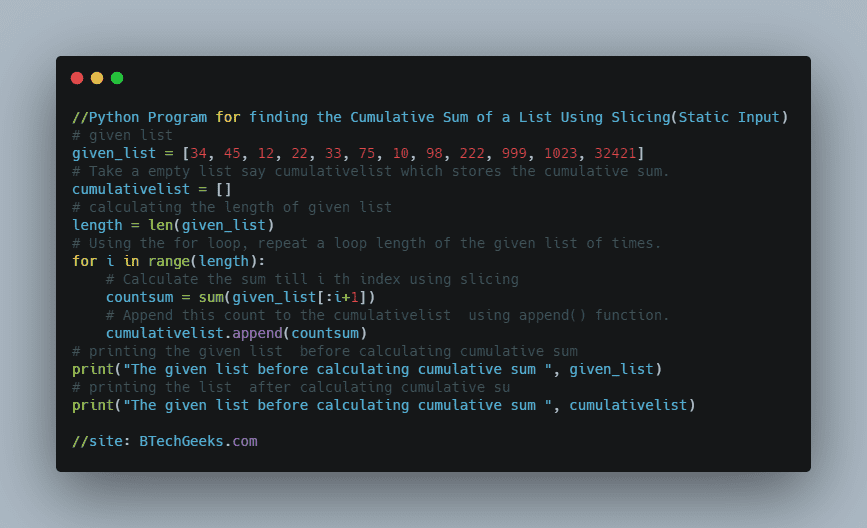Fibonacci python recursion: Don’t miss the chance of Java programs examples with output pdf free download as it is very essential for all beginners to experienced programmers for cracking the interviews.
Fibonacci Sequence:
Fibonacci recursion python: The Fibonacci Sequence is a series of integers named after the Italian mathematician Fibonacci. It is merely a string of numbers that begins with 0 and 1 and is then followed by the addition of the two numbers before it.
Recursion:
Python fibonacci recursive: If you’re familiar with Python functions, you’ll know that it’s typical for one function to call another. It is also feasible for a function in Python to call itself! A recursive function calls itself, and the process of using a recursive function is known as recursion.
Although it may appear strange for a function to call itself, many sorts of programming challenges are better stated recursively.
Given a number, the task is to find the Fibonacci sequence till the given number using recursion.
- C Program to Print Fibonacci Series using Recursion
- Java Program to Print Fibonacci Series by Using Recursion
- Python Program to Find the Power of a Number Using Recursion
Examples:
Example1:
Input:
given number = 23
Output:
The Fibonacci Sequence till the given number 23 = Number = 0 Number = 1 Number = 1 Number = 2 Number = 3 Number = 5 Number = 8 Number = 13 Number = 21 Number = 34 Number = 55 Number = 89 Number = 144 Number = 233 Number = 377 Number = 610 Number = 987 Number = 1597 Number = 2584 Number = 4181 Number = 6765 Number = 10946 Number = 17711
Example2:
Input:
given number =13
Output:
Enter some random number = 13 The Fibonacci Sequence till the given number 13 = Number = 0 Number = 1 Number = 1 Number = 2 Number = 3 Number = 5 Number = 8 Number = 13 Number = 21 Number = 34 Number = 55 Number = 89 Number = 144
Program to Find the Fibonacci Series Using Recursion
Fibonacci series using recursion in java: Below are the ways to find the Fibonacci Series using the recursive approach in Python:
1)Using Recursion(Static Input)
Approach:
- The user must give the number as static input and store it in a variable.
- Pass the given number as a parameter to the Fibonacci recursive function.
- The base condition is defined as a value that is less than or equal to 1.
- Otherwise, call the function recursively with the argument as the number minus 1 plus the function that was called recursively with the parameter as the number minus 2.
- Use a for loop to return the Fibonacci sequence and return the result and print the result.
- The exit of the program.
Below is the implementation:
# function which finds the fibonacci sequence recursively
def fibonacciRecursion(numb):
# The base condition is defined as a value that is less than or equal to 1.
if(numb <= 1):
return numb
else:
# Otherwise, call the function recursively with the argument as the number minus 1 plus the function that was called
# recursively with the parameter as the number minus 2.
return(fibonacciRecursion(numb-1) + fibonacciRecursion(numb-2))
# The user must give the number as static input and store it in a variable.
numb = 23
print("The Fibonacci Sequence till the given number", numb, ' = ')
# Looping from 1 to given number using for loop
for n in range(numb):
# passing the iterter value as argument to the recursive function fibonacciRecursion
print('Number = ', fibonacciRecursion(n))
Output:
The Fibonacci Sequence till the given number 23 = Number = 0 Number = 1 Number = 1 Number = 2 Number = 3 Number = 5 Number = 8 Number = 13 Number = 21 Number = 34 Number = 55 Number = 89 Number = 144 Number = 233 Number = 377 Number = 610 Number = 987 Number = 1597 Number = 2584 Number = 4181 Number = 6765 Number = 10946 Number = 17711
In this way, we can print the Fibonacci sequence of the given number using recursion.
2)Using Recursion(User Input)
Approach:
- The user must give the number as user input using the int(input()) function and store it in a variable.
- Pass the given number as a parameter to the Fibonacci recursive function.
- The base condition is defined as a value that is less than or equal to 1.
- Otherwise, call the function recursively with the argument as the number minus 1 plus the function that was called recursively with the parameter as the number minus 2.
- Use a for loop to return the Fibonacci sequence and return the result and print the result.
- The exit of the program.
Below is the implementation of the above approach:
# function which finds the fibonacci sequence recursively
def fibonacciRecursion(numb):
# The base condition is defined as a value that is less than or equal to 1.
if(numb <= 1):
return numb
else:
# Otherwise, call the function recursively with the argument as the number minus 1 plus the function that was called
# recursively with the parameter as the number minus 2.
return(fibonacciRecursion(numb-1) + fibonacciRecursion(numb-2))
# The user must give the number as user input using the
# int(input()) function and store it in a variable.
numb = int(input('Enter some random number = '))
print("The Fibonacci Sequence till the given number", numb, ' = ')
# Looping from 1 to given number using for loop
for n in range(numb):
# passing the iterter value as argument to the recursive function fibonacciRecursion
print('Number = ',fibonacciRecursion(n))
Output:
Enter some random number = 13 The Fibonacci Sequence till the given number 13 = Number = 0 Number = 1 Number = 1 Number = 2 Number = 3 Number = 5 Number = 8 Number = 13 Number = 21 Number = 34 Number = 55 Number = 89 Number = 144
Explanation:
- The number of terms must be entered by the user and saved in a variable.
- A recursive function takes the number as a parameter.
- The number must be less than or equal to one as a starting point.
- Otherwise, the function is run recursively with the number minus 1 as an input, which is added to the function that is called recursively with the number minus 2.
- The result is returned, and the Fibonacci sequence is printed using a for statement.
- In this way, we can print the Fibonacci sequence of the given number using recursion.
Related Programs:
- Python Program to Check Whether a String is a Palindrome or not Using Recursion
- Python Program to Find the Product of two Numbers Using Recursion
- Python Program to Find if a Number is Prime or Not Prime Using Recursion
- Python Program to Find the Power of a Number Using Recursion
- Python Program to Find the LCM of Two Numbers Using Recursion
- Python Program to Find the Length of a List Using Recursion
- Python Program to Reverse a String Using Recursion












